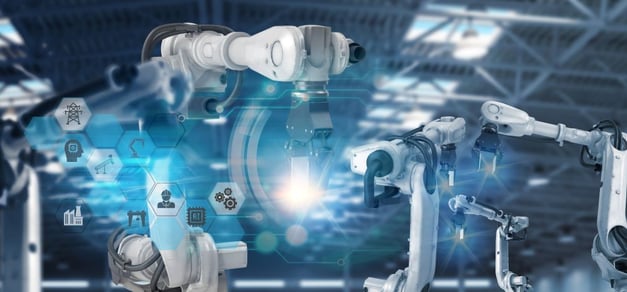
We rarely dedicate a blog post to one of our products. But the BX-220 is going to be an exception. As we discussed in the blog post: “How to Choose Industrial Computers for the Edge”, adding computer capabilities in the Edge can be tricky due to the data volume and physical constraints. Since we are aware of the unique requirements of these applications, we worked on developing a computer specifically designed for the Edge.
The BX-220 box computer is suitable for Virtual PLCs, Industrial Control Systems, Interactive Digital Signage, Robotics, Drones, Kiosks, Medical Equipment, and Automotive Infotainment Systems. How did we manage to design a box computer with a wide range of Edge applications? Let’s review the main customer pain points we considered in its design.
High data volumes and processing capabilities
Many applications on the Edge will capture high data volumes which might be partially processed in a computer close by before sending it to the main data center. Since the CPU is the heart of the organism, we included a cost-effective industrial-grade CPU that is powerful enough for the processing capabilities required without introducing unnecessary capacity. In many cases, waste comes from unnecessarily oversizing components.
Size matters
With this computer, we reduced size as much as possible. In the Edge, the footprint is a luxury most applications do not have. Our target was to use a form factor of less than 8.34 in (212 millimeters) in all dimensions. We chose a fanless configuration to leverage the space available and to avoid introducing moving parts which in turn increase repair and maintenance costs.
Remote monitoring
We said the BX-220 is unique at the beginning of this post. Most Edge computers are installed in places that are difficult to reach or which are far away. This is an asset management nightmare. If the computer fails or shuts down unexpectedly, you need to send a person to solve the issue. For that reason, we added Reliability Availability and Serviceability (RAS) feature to the BX-220. RAS operates independently from the main computer and provides various functions to increase system reliability. These functions include automatically restarting the system when detecting errors such as frozen programs, operating system startup faults, a rise in internal temperature, and saving detailed logs of the occurrence of errors, which can be useful in failure analysis. The RAS feature makes the BX-220 unique. You can not only perform maintenance tasks remotely but also manage errors while preserving service and information.
Flexibility
Since box computers can be used in a wide range of Edge applications, they need to be flexible by offering input/output options. In the case of the BX-220, we offer two Ethernet ports that support wake on LAN, one RS-232 and one RS-422/485/232, two USB 2.0, and one USB 3.0. That way you enjoy the flexibility to communicate with a wide variety of components or devices.
Reliability
One challenge on the Edge is power availability. Many of these applications will offer only limited power or unreliable power supplies. The BX-220 input voltage is rated 12-24 Volts. But in case you use batteries or other fluctuating power supply, our computer will work between 10.8-31.2 VDC. And the current would range from 2.6A to 1.5A depending on the voltage selected.
Stringent environmental conditions
Edge applications do not typically offer controlled environments like data centers do. Ranging from high temperatures to dusty or humid environments, box computers in the Edge need to be able to offer best-in-class performance regardless. The BX-220 is proven to perform with a wide range of operating temperatures and to offer Line Noise Resistance, Static Electricity Resistance, Vibration Resistance, Impact Resistance, and Regulatory Certifications. As a result, the BX-220 is proven to work in stringent environments.
Even though the BX-220 is a strong competitor in the Edge, this is not the only computer we have developed for these applications. But it is important to mention that by using this computer as an example we have been able to prove that we understand your pain points when choosing a computer for the Edge. If you want to continue reading about Embedded Computers visit this page, or if you want to browse our Computer Offering, visit this page.